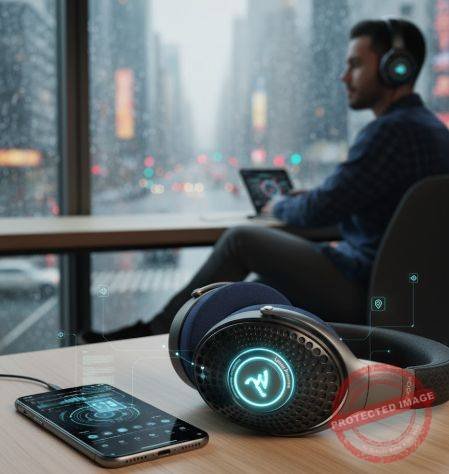From Wheels to Wearables—How Intelligent Mobility Devices Are Transforming the Way We Move, Work, and Connect.
A New Era of Personal Mobility
Mobility has always been synonymous with freedom—but in the digital age, it’s also become synonymous with intelligence. The rise of mobility gadgets—from e-bikes and smart scooters to foldable electric vehicles and AI-powered personal assistants—marks a profound shift in how humans move through their environments.
What once required physical effort or fossil fuels is now enabled by smart, connected, and sustainable technologies. These devices blend portability, efficiency, and digital intelligence, allowing users to navigate cities, campuses, and even rural areas with unprecedented agility.
In 2025, mobility is no longer just transportation—it’s a lifestyle.
From Mechanical to Digital Mobility
The 20th century gave us the automobile revolution; the 21st is delivering the personal mobility revolution.
Mechanical design has converged with digital innovation, transforming how people move:
-
Electric scooters and e-bikes provide affordable, emission-free urban transit.
-
Foldable electric vehicles combine portability with power.
-
Smart luggage and robotic companions assist travelers autonomously.
-
Augmented reality (AR) helmets and HUDs enhance navigation and safety.
These innovations reflect a new mindset: mobility must be smart, sustainable, and seamlessly connected.
Connectivity: The Heart of Smart Mobility
At the center of modern mobility gadgets is connectivity—the invisible web that links devices, users, and environments.
Through 5G, Bluetooth LE, and IoT integration, mobility devices now communicate in real time:
-
E-bikes track performance and battery health through mobile apps.
-
Smart helmets share live GPS data with navigation systems.
-
Portable EVs sync with charging networks and smart city grids.
-
AI-powered mobility hubs optimize routes based on weather and traffic data.
This connectivity transforms mobility from a solitary activity into a networked experience, enhancing safety, efficiency, and sustainability.
AI: The New Engine of Mobility
Artificial Intelligence is redefining how mobility devices operate, learn, and adapt.
-
Predictive maintenance algorithms anticipate wear and tear before breakdowns occur.
-
AI route optimization adjusts paths dynamically to avoid congestion.
-
Gesture and voice control allow hands-free operation of helmets and devices.
-
Adaptive power management adjusts performance for terrain and usage patterns.
AI gives modern mobility gadgets an element of autonomy, turning them into learning machines capable of evolving alongside user behavior.
Design for the Human Experience
Mobility gadgets are no longer just about speed—they’re about experience. The most successful designs blend ergonomic comfort, intuitive interfaces, and personalization.
Manufacturers are integrating:
-
Lightweight composite materials for portability and strength.
-
Modular accessories for flexibility in daily use.
-
Smart displays and AR interfaces for real-time navigation and safety alerts.
-
Biometric authentication for secure user access and anti-theft protection.
These innovations make personal mobility not only functional but frictionless and emotionally engaging.
The Sustainability Imperative
As cities push for carbon neutrality, sustainable mobility gadgets are becoming key drivers of environmental progress.
E-bikes, scooters, and compact EVs help reduce urban congestion and pollution, while innovations in battery recycling and renewable charging infrastructure ensure the ecosystem remains circular.
In parallel, governments are incentivizing green mobility solutions through tax credits, subsidies, and infrastructure investment—propelling the adoption of eco-friendly, smart transport alternatives worldwide.
Challenges in the Mobility Revolution
The evolution of mobility gadgets faces growing pains:
-
Battery limitations restrict range and lifespan.
-
Regulatory inconsistency across cities complicates public use.
-
Cybersecurity risks arise as devices become more connected.
-
Infrastructure gaps persist in developing markets.
Yet, as with every major shift, these challenges are catalysts for innovation. Startups and tech giants alike are collaborating with municipalities to create unified standards for safe, smart mobility.
Closing Thoughts and Looking Forward
Mobility gadgets represent the convergence of technology, sustainability, and human ingenuity. They empower people to move smarter, live greener, and connect seamlessly—reshaping not just how we travel, but how we experience movement itself.
In the coming decade, the lines between personal transport, wearable tech, and AI will blur completely. Your next mobility gadget won’t just carry you—it will know you, adapt to you, and move with you.
The future of mobility isn’t about horsepower—it’s about human power, amplified by technology.
References
-
“The Future of Urban Mobility: Smart, Sustainable, and Connected” – World Economic Forum
https://www.weforum.org/agenda/2024/07/the-future-of-urban-mobility -
“How AI and IoT Are Powering Next-Generation Mobility” – McKinsey & Company
https://www.mckinsey.com/industries/automotive-and-assembly/our-insights/ai-and-iot-in-next-generation-mobility -
“Sustainable Personal Mobility and Micromobility Growth” – Deloitte Insights
https://www.deloitte.com/insights/sustainable-personal-mobility -
“Designing the Future of Human-Centered Mobility” – MIT Technology Review
https://www.technologyreview.com/2024/09/10/human-centered-mobility-design -
“The Rise of Intelligent Personal Transport” – Forbes Tech Council
https://www.forbes.com/sites/forbestechcouncil/2024/10/03/the-rise-of-intelligent-personal-transport
Author: Serge Boudreaux – AI Hardware Technologies, Montreal, Quebec
Co-Editor: Peter Jonathan Wilcheck – Miami, Florida
Post Disclaimer
The information provided in our posts or blogs are for educational and informative purposes only. We do not guarantee the accuracy, completeness or suitability of the information. We do not provide financial or investment advice. Readers should always seek professional advice before making any financial or investment decisions based on the information provided in our content. We will not be held responsible for any losses, damages or consequences that may arise from relying on the information provided in our content.



